This post will show you how to fix Microsoft 365 Apps activation error – Sorry, another account from your organization is already signed in on this computer. Microsoft 365 is a subscription-based service that allows users to access various productivity and collaboration tools. Some of these include Word, Excel, OneDrive, etc. But lately, some users have been complaining about errors while trying to activate Microsoft 365. Fortunately, this post features solutions to fix the error.
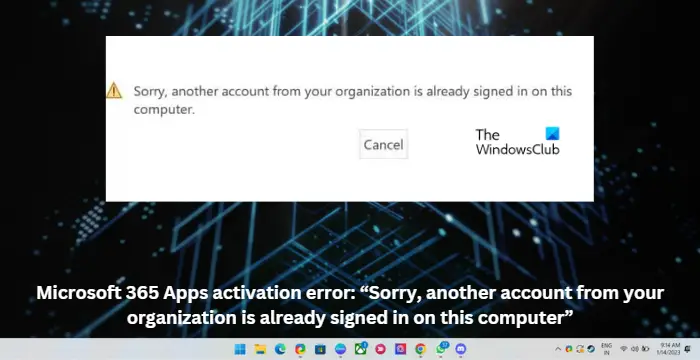
Sorry, another account from your organization is already signed in on this computer – Microsoft 365 Apps activation error
You can fix the Sorry, another account from your organization is already signed in on this computer while activating Microsoft 365, by following these suggestions:
- Use Microsoft Support and Recovery Assistant
- Uninstall Multiple Office Copies
- Check Microsoft 365’s Subscription Status
- Disconnect Work or School Account
- Temporarily Disable Third-Party Antivirus
- Check if User Licences are Aligned
- Delete Broker plugin Data
- Activate Office in Clean Boot Mode
- Repair Office 365 Online
Now let us see these in detail.
1] Use Microsoft Support and Recovery Assistant
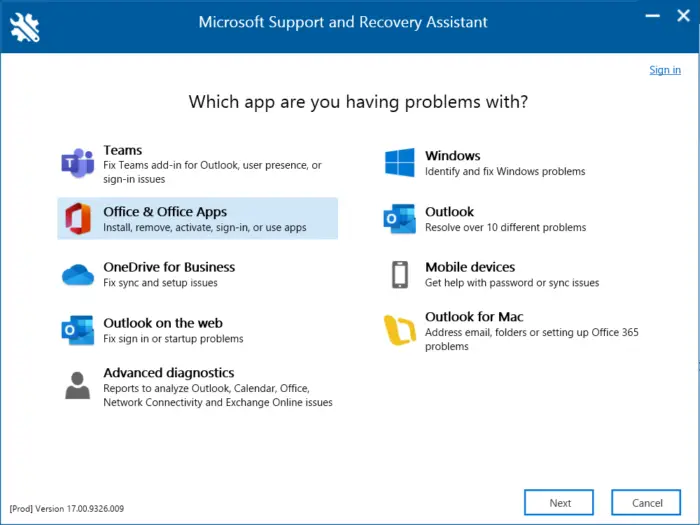
Microsoft Support and Recovery Assistant can help resolve Office 365, Outlook, OneDrive, & other Office-related problems. The tool can help you resolve problems with windows Activation, Updates, Upgrade, Office Installation, Activation, Uninstallation, Outlook email, folders, etc. Run it and see if it helps.
2] Uninstall Multiple Office Copies
If your device has multiple office versions installed, it could be the reason why this error code occurs. Uninstall these and check if the Microsoft 365 apps activation error gets fixed.
3] Check Microsoft 365’s Subscription Status
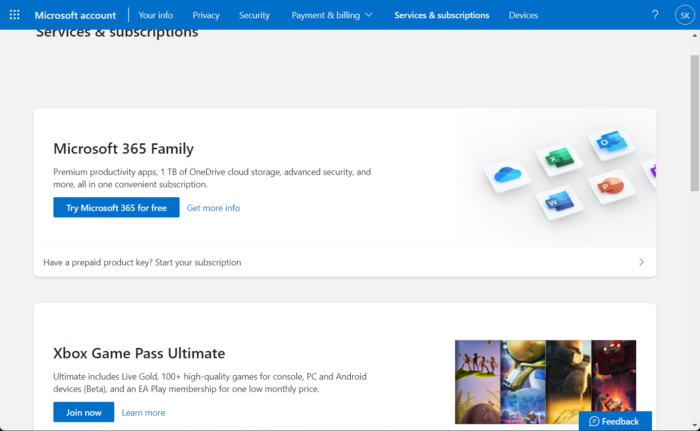
Now check if you have a subscription to Office 365 and make sure it is still active. If not, renew your subscription and try again. Here is how you can do it:
- Close all Office apps on your Windows device.
- Navigate to your Microsoft Account page.
- If asked to sign in, enter your account credentials.
- Navigate to Services & subscriptions and check the Office’s subscription status.
4] Disconnect Work or School Account
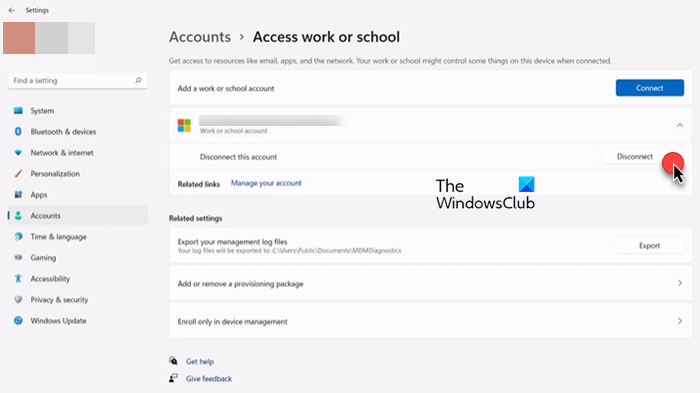
If you have a work or school account connected to your system, it could cause an activation error. Try disconnecting the account and checking if the error gets fixed. Here’s how:
- Press the Windows key + I to open Settings.
- Navigate to Accounts > Access work or school.
- If the account listed here isn’t the account you use to sign into Windows, then select the account and click on Disconnect.
- Restart your device once done, and try activating Microsoft 365 again.
5] Temporarily Disable Third-Party Antivirus
Third-party antivirus software installed on your device can be responsible for another account signed in error. Disable the antivirus software and check if the error is solved. If disabling the software doesn’t work, uninstall the antivirus software temporally and check for the same. Also, if you’re using a VPN, disable it.
6] Check User Licenses
You can assign or unassign licenses for up to 20 users simultaneously. All the products you own and the number of licenses available for each will be available on the licenses page. Here’s how you can check if the user licenses are assigned:
- Open the Microsoft 365 Admin Center.
- Navigate to Users > Active Users.
- Select the user you want to assign a license and click on Licenses and Apps.
- Check the licenses you want to assign here and click on Save Changes.
7] Delete BrokerPlugin Data
BrokerPlugin.exe is an AAD token broker plugin file used to access virtualized applications from various devices. Sometimes its data gets corrupted, causing Microsoft 365 activation errors. Delete the Broker plugin data and then reinstall it to fix the issue. Here’s how:
- Open File Explorer and navigate to the following path.
%LOCALAPPDATA%\Packages\Microsoft.AAD.BrokerPlugin_cw5n1h2txyewy\AC\TokenBroker\Accounts
- Press CTRL + A to select all the files and then hit the Delete button.
- Now navigate to this path.
%LOCALAPPDATA%\Packages\Microsoft.Windows.CloudExperienceHost_cw5n1h2txyewy\AC\TokenBroker\Accounts
- Select all the files and hit the Delete button.
- Restart your device, run the Support and Recovery Assistant, and try activating Microsoft 365 again.
8] Activate Office in Clean Boot Mode
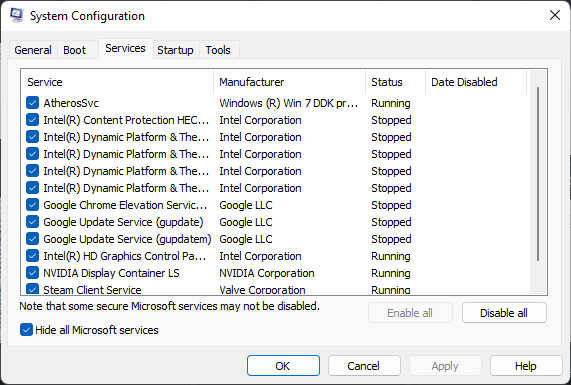
Third-party applications installed on your device can be responsible for why the sorry, another account from your organization is already signed in on this computer error occurs. Perform a Clean Boot of your PC to restrict all third-party applications. Here’s how you can perform a clean boot:
- Click on Start, search for System Configuration, and open it.
- Navigate to the General tab and check the Selective Startup option and the Load System Services Option under it.
- Then navigate to the Services tab and check the option Hide all Microsoft services.
- Click on Disable all at the bottom right corner and hit Apply, then Ok to save changes.
If the error doesn’t appear in the Clean Boot State, you may need to manually enable one process after another and see who the culprit is. Once you’ve identified it, disable or uninstall the software.
9] Repair Office 365 Online
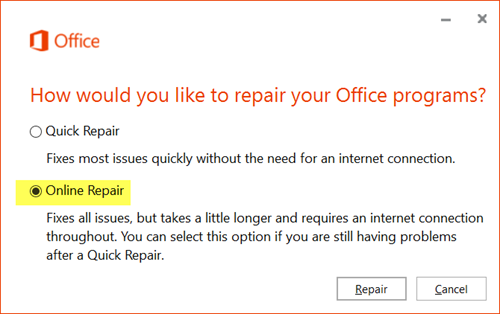
If none of these steps could help you, consider repairing Office 365 online. It has been known to help most users get over this error. Here’s how to do it:
- Press Windows Key + I to open Settings.
- Click on Apps > Apps & Features.
- Now scroll down, click on the office product you want to repair, and select Modify.
- Click Online Repair and follow the instructions on-screen.
Read: Fix 0x8007001D Office Activation error
Why does it say my Microsoft account is already in use?
This error can occur mainly if another device is signed using the same Microsoft account. However, it can also appear login credentials stored in the browser cache somehow get corrupted. Clear the cache and check if it fixes the issue.
How do you fix that Microsoft account doesn’t exist, Enter a different account?
The error message “Microsoft Account does not exist” usually occurs if the user enters corrupted or wrong login credentials. To fix this, reset your Microsoft accounts password.